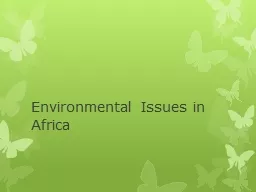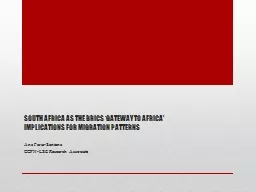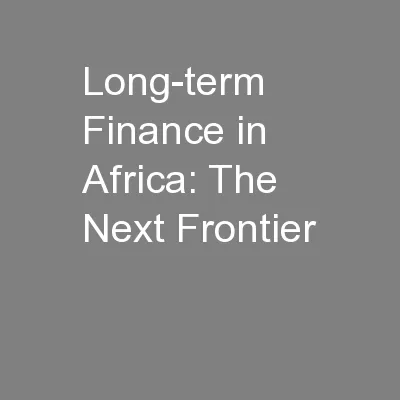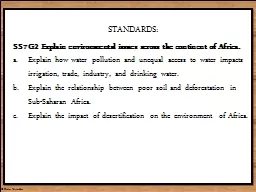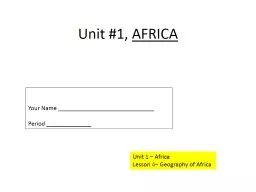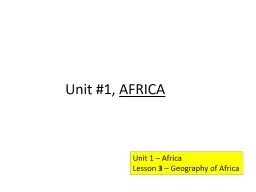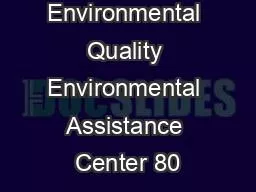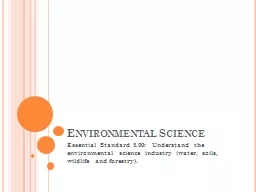PPT-Environmental Issues in Africa
Author : lois-ondreau | Published Date : 2018-03-21
The Problems Africans face many different types of environmental issues Some of them are lack of water poor soil quality and expanding deserts Much of Africa has
Presentation Embed Code
Download Presentation
Download Presentation The PPT/PDF document "Environmental Issues in Africa" is the property of its rightful owner. Permission is granted to download and print the materials on this website for personal, non-commercial use only, and to display it on your personal computer provided you do not modify the materials and that you retain all copyright notices contained in the materials. By downloading content from our website, you accept the terms of this agreement.
Environmental Issues in Africa: Transcript
Download Rules Of Document
"Environmental Issues in Africa"The content belongs to its owner. You may download and print it for personal use, without modification, and keep all copyright notices. By downloading, you agree to these terms.
Related Documents

